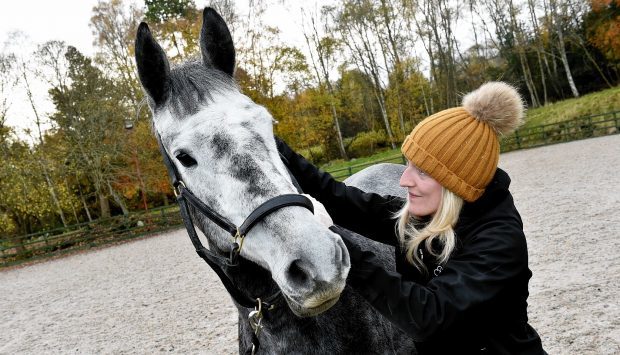This month Annabel Sall met Sue Emery – a remedial and sports massage therapist for humans and equines. While her horse had a treatment and assessment she talked to Ms Emery about her background, career to date and the benefits of massage for our equine partners.
Similar to human athletes our horses need care and maintenance to ensure they are pain-free, supple and building muscle correctly. Aside from relaxing them (the yawning is a good sign from my mare, apparently) it enables you to understand how they move and any restrictions within their body that might make their work harder.
Whether you are a “happy hacker” or professional competitive rider, the benefits can include relief from muscle spasm and tension, improved circulation, increased range of movement and flexibility and prevention of injury. During the treatment, awareness of the “posture” of your horse and incorporating advice on training plans can make a huge difference to your horses’ way of going.
Sue explains: “An important part of treatment for me is helping with an ongoing training plan, incorporating strengthening and stretching and advice on the proper use of training aids.
“A small change can make a big difference – for example, removing haynets that are too high and therefore strain the horse when eating can all help towards an overall aim of suppleness and reduction of pain.”
Sue is quick to point out that equine massage is also part of the overall treatment with your other equine specialists. “It is really important for my advice to compliment other experts that you have working with your horse – vets, saddle fitters and instructors. It is very much a team effort to ensure everyone has the same goal with your horse.”
After an initial assessment where Sue examines the horse in walk, she discussed areas of weakness and tension and how the treatment would help. It not only gave me an insight into the confirmation of my young horse but also how I needed to work her for future strength and suppleness. I had easy to follow in-hand exercises to work on and a much clearer picture of where my horse needs to develop too.
Sue rides herself and started her career in massage later on in life due to her passion for horses. She qualified in 2012 and continues to expand her own knowledge in both human and equine therapy. She is due to qualify in veterinary physiotherapy in April next year and will be one of a few qualified practitioners in Scotland.
“Our profession is unregulated so it is important for me to ensure my training and qualifications are as current as they can be. I work throughout Scotland and although I’m based in Nairn, I travel through Aberdeenshire, Moray and the Highlands regularly and hold workshops throughout the country, too.”
Sue is keen to pass on her knowledge and she holds events where owners can learn the basics of massage for their own horses. During November, she held a workshop in Stornoway after they proved popular in Aberdeen and Inverness.
Once my horse was relaxed and content it was then time to work on me. As Sue points out, it is commonplace for riders to only focus on their horse and more often than not a problem can be worsened by a rider and their own tension. As a qualified Swedish massage therapist, the treatment can help relax and reduce any pain a rider might carry too – which can impact directly on how a horse will move.
Sue is also due to become an affiliated instructor of equipilates from January 2017.
